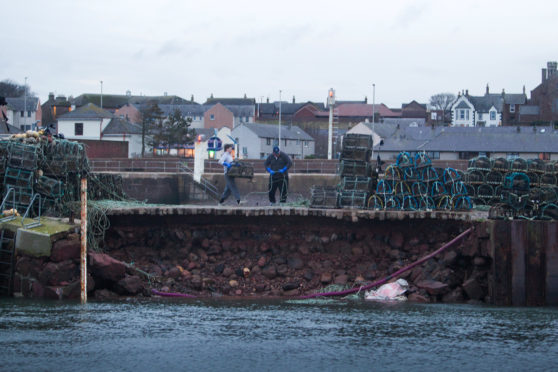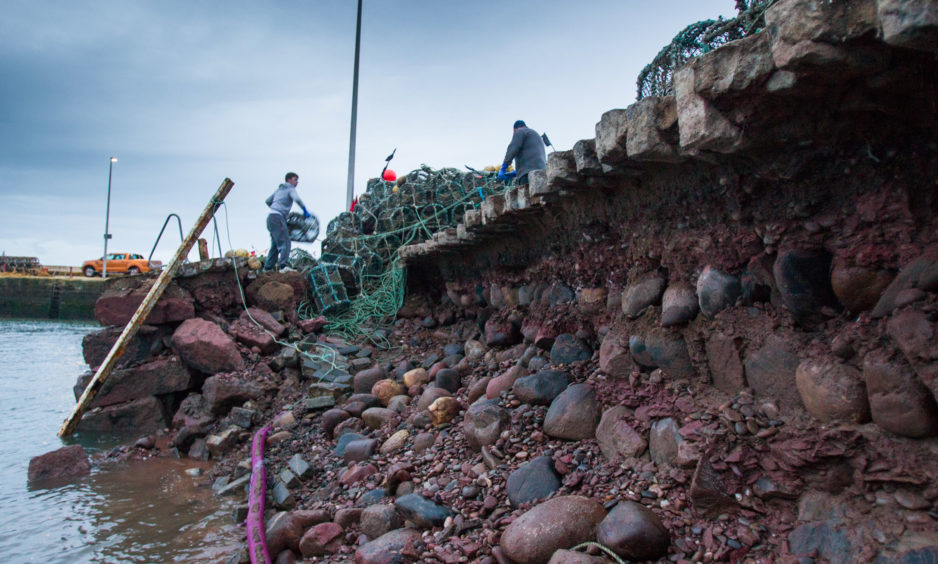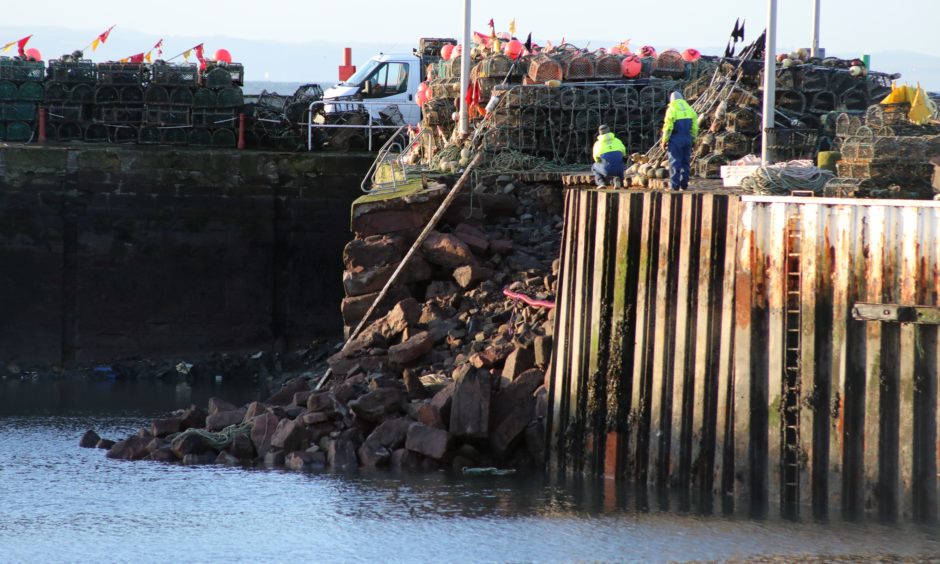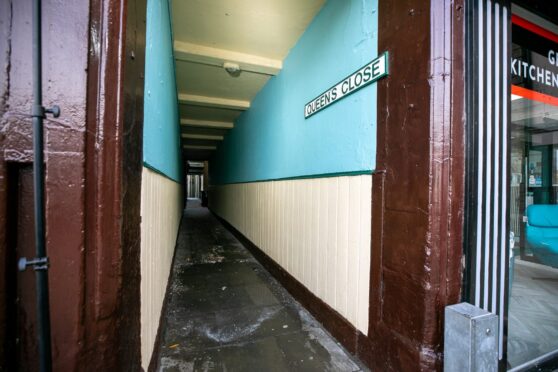Angus Council is facing claims that a lack of maintenance and recent dredging operations are to blame for a large section of Arbroath’s harbour wall collapsing into the sea.
As the cash-strapped local authority braces itself for a large six-figure repair bill, one harbour insider has said a double whammy of recent dredging and a lack of regular repair could have led to the collapse.
“It used to be that the cement at the stonework was re-pointed every year, but that hasn’t happened for years now,” said the source.
“Add to that the dredging work that took place recently was conducted too close to the harbour wall, much closer than usual, and it may well be that the dredging has undermined the wall and caused the collapse.”
The chair of Arbroath Harbour Joint Consultative Committee, Councillor Alex King, declined to speculate on the claims and said a thorough inspection would have to take place.
“First of all, I welcome the fact that that no-one was injured when the wall collapsed, and that no boats were damaged either,” he said.
“The wall plays an extremely important role in protecting the navigation channel into the outer harbour and is a remaining part of the old 18th century harbour.
“While other parts of the harbour walls have been refaced with materials including steel, the Ballast Quay remains as it was when it was first constructed.
“The fact is that there is a lot of investigatory and design work to take place, and I have already spoken with senior councillors from the administration to get the ball rolling,” said Mr King.
“We won’t know the final figure for some time, but early repair estimates run into hundreds of thousands of pounds, but I am confident that the money will be found to fund the work.”
The damage was reported early on Monday morning, and an initial inspection found that the wall on the inside of the outer harbour, known as the Ballast Quay, had subsided, resulting in a loss of around one-third of the wall.
A spokesman for Angus Council said: “Further assessment and inspection are ongoing with a view to protect the exposed quay and find an affordable and sustainable solution.
“Meetings with contractors are being held to this end and the quay is currently cordoned off to restrict access. Beyond these immediate requirements, we will be looking into the full circumstances around the collapse to the Ballast Quay.”
The history of Arbroath harbour
Although the majority of boats at Arbroath harbour today are leisure craft, the town has enjoyed a rich and varied maritime history that may date back to Pictish times, and previously saw the town play a role in international trade.
The monks of Arbroath Abbey were granted the right to construct a harbour as part of their foundation grant in the 12th century, but it was not until 1394 under Abbot Gedy that one was constructed near the mouth of the Brothock Burn at what is now Old Shore Head.
The exposed location made the harbour unpopular with seafarers, and it fell into disrepair, with local inhabitants ordered to clear it of sand and stones in 1528.
Repairs did not begin until 1530, however, when King James V ratified the grant to the abbey, and further repairs were undertaken in 1591, and in the 17th century.
It was not until 1724-1725 that a more sheltered harbour was built in the current location, though it suffered then, as it does now, from silting.
In 1839, the harbour was enlarged and improved with the addition of the sea wall, quay walls and breakwater to the old inner harbour at a cost of £58,000, turning harbour into the style that we recognise today.












